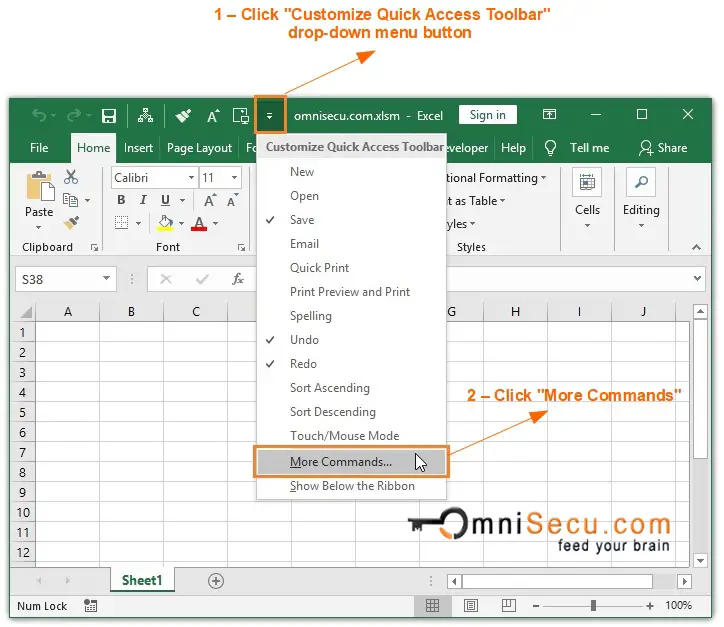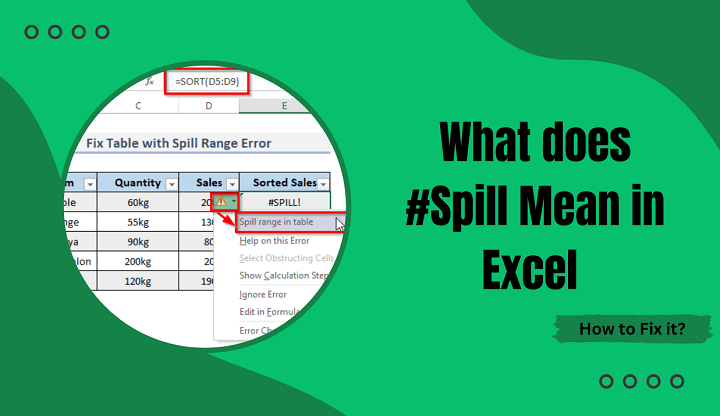Fix Your Excel: Resetting Quick Access Toolbar

In the vast world of data management and analysis, Excel remains an indispensable tool for professionals across industries. As one delves deeper into the intricacies of this powerful software, it becomes evident that efficient customization is key to optimizing productivity. Among the many customizable features, the Quick Access Toolbar (QAT) stands out as a critical component that can be tailored to individual preferences, allowing for quicker access to frequently used commands and features. However, over time, the QAT may become cluttered with rarely used buttons or even corrupted, leading to frustration and reduced efficiency. This guide aims to provide a comprehensive solution to resetting the Quick Access Toolbar in Excel, offering a fresh start and a more streamlined workflow.
Understanding the Quick Access Toolbar

The Quick Access Toolbar in Microsoft Excel is a customizable toolbar that sits above the ribbon, providing easy access to frequently used commands and features. By default, it includes common actions like Save, Undo, and Redo, but it can be tailored to include any command from the ribbon or even custom macros. This flexibility is a powerful tool for Excel users, as it allows them to create a personalized workspace, reducing the time and effort required to access frequently used functions.
The Importance of Resetting
While the QAT is a powerful feature, it can become cluttered or corrupted over time, especially for heavy Excel users. This can lead to a variety of issues, from reduced efficiency due to an overcrowded toolbar to more severe problems like Excel crashing or malfunctioning. Resetting the QAT can provide a fresh start, ensuring the toolbar is optimized for your current needs and free of any potential corruption.
Step-by-Step Guide to Resetting the Quick Access Toolbar

Resetting the Quick Access Toolbar in Excel is a straightforward process, but it requires careful attention to ensure no important customizations are lost. Here's a detailed guide to help you through the process:
Step 1: Open Excel and Access the Options
Launch Microsoft Excel on your computer. Once Excel is open, click on the File tab in the top-left corner of the screen. This will open the Backstage view, which provides access to various Excel settings and options.
Step 2: Navigate to the Quick Access Toolbar Settings
In the Backstage view, locate and select Options in the list of items on the left-hand side. This will open the Excel Options dialog box. In this dialog box, you'll see a list of categories on the left. Scroll down and select Quick Access Toolbar.
Step 3: Reset the Quick Access Toolbar
In the Quick Access Toolbar section, you'll see two dropdown menus: Choose commands from and Customize. Click on the dropdown menu for Choose commands from and select All Commands. This will display a long list of all the commands available in Excel.
Scroll down this list and locate the command Reset. Select this command and click the Add button to move it to the list of commands on the right, labeled Commands on the Quick Access Toolbar. The Reset command should now appear in your QAT.
Click on the Reset command, and a dialog box will appear asking if you want to reset the Quick Access Toolbar. Click Yes to confirm. Excel will now reset your QAT to its default state, removing all custom commands and settings.
Step 4: Reconfigure Your Quick Access Toolbar
After resetting the QAT, you'll want to reconfigure it to suit your needs. To add a command to the QAT, select it from the All Commands list, click Add, and then move it to the Commands on the Quick Access Toolbar list. You can rearrange the order of commands by clicking and dragging them within this list.
Additionally, you can choose to display the QAT below the ribbon or above it. To do this, click on the dropdown menu for Show Quick Access Toolbar and select your preferred option.
Best Practices and Tips for Customizing Your QAT
Customizing your Quick Access Toolbar can significantly enhance your Excel experience, making frequently used commands more accessible and streamlining your workflow. Here are some best practices and tips to ensure you make the most of this feature:
Keep it Simple
While it's tempting to add every command you use to the QAT, remember that the primary purpose of this toolbar is to provide quick access to frequently used functions. A cluttered QAT can be as inefficient as having no customized toolbar at all. Keep it simple and add only the commands you use most often.
Use Custom Groups
Excel allows you to create custom groups within the QAT. This can be especially useful if you have a set of commands that are frequently used together. To create a custom group, simply add the commands to the QAT as described earlier, and then select them all and click the New Group button. This will create a new group with the selected commands.
Explore Available Commands
When customizing your QAT, don't limit yourself to the commands you're already familiar with. Excel offers a wide range of commands and features, many of which can significantly improve your efficiency. Explore the All Commands list to discover new functions that could benefit your workflow.
Consider Using Macros
If you find yourself repeating a series of steps frequently, consider creating a macro. Macros are a powerful feature in Excel that allow you to record a series of actions and then replay them with a single click. You can then add the macro to your QAT for quick access.
| QAT Command | Description |
|---|---|
| Save | Saves the current workbook. |
| Undo | Reverses the last action. |
| Redo | Reapplies the last action that was undone. |
| Quick Print | Prints the active worksheet or the entire workbook. |
| Copy | Copies the selected cells or range. |
| Paste | Pastes the contents of the clipboard into the selected cells or range. |

Frequently Asked Questions
How do I add a command to the Quick Access Toolbar in Excel?
+To add a command to the Quick Access Toolbar, open the Excel Options dialog box by clicking on the File tab and selecting Options. In the dialog box, select Quick Access Toolbar from the list of categories. From the Choose commands from dropdown menu, select All Commands. Scroll through the list of commands, select the desired command, and click Add. The command will now appear in the Commands on the Quick Access Toolbar list.
Can I rearrange the order of commands in the Quick Access Toolbar?
+Yes, you can rearrange the order of commands in the Quick Access Toolbar. Simply select the command you want to move, click and hold the mouse button, and drag it to the desired position. Release the mouse button to drop the command in its new position.
How do I remove a command from the Quick Access Toolbar in Excel?
+To remove a command from the Quick Access Toolbar, select the command you want to remove, and click the Remove button. The command will be removed from the Commands on the Quick Access Toolbar list.
Is it possible to add a custom group to the Quick Access Toolbar in Excel?
+Yes, you can add a custom group to the Quick Access Toolbar. Select the commands you want to include in the group, and then click the New Group button. A new group with the selected commands will be created in the Commands on the Quick Access Toolbar list.



